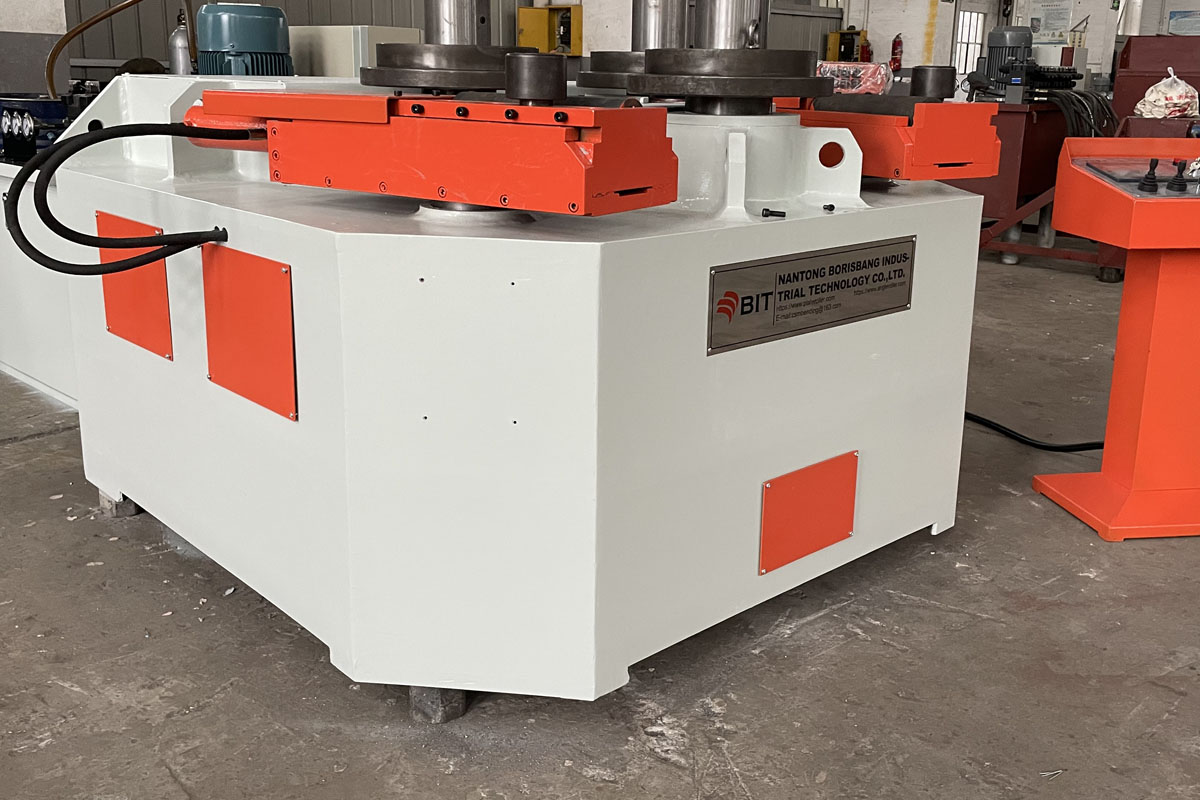Profile Bending Machine:Structure and Operating Principle & Key points for safe operation
A profile bending machine is a specialized device designed for rolling, bending, rounding, and other bending operations on various metal profiles (such as angle steel, channel steel, I-beams, round tubes, square tubes, and flat steel). This equipment allows for flexible selection of single- or multiple-bending methods, tailored to the material properties, ductility, and required bend radius of each profile, to meet diverse engineering and manufacturing needs.
Profile Bending Machine Structure and Operating Principle
The profile bending machine utilizes an arc-type, downward-adjustable design. The upper roller is fixed, while the two lower rollers move upward and downward relative to the upper roller around a central axis. This design not only effectively pre-bends the profile end, but also, through the coordinated action of the lower rollers, gradually and precisely bends the profile, achieving the desired bending effect.
The profile bending machine utilizes a fully hydraulic drive system, offering powerful power and rapid response, capable of processing large-tonnage and large-format profiles. The core movement of the equipment—the lifting and lowering of the two lower rollers—is centrally controlled by an electrical system with digital display, offering easy and precise operation, improving production efficiency and safety.
The two lower rollers of the profile bending machine serve not only as guide and support components but also as the main drive shafts. Driven by high-torque hydraulic motors, they ensure strong power and smooth operation during the bending process. By adjusting the relative position and lifting height of the two lower rollers, the bending angle and curvature radius of the profile can be precisely controlled, making it suitable for high-precision bending of profiles of various specifications. To further enhance the stability of the profile during the bending process and prevent distortion, lateral bending, and precision deviation, the equipment has been equipped with vertically adjustable support rollers and auxiliary rollers. These auxiliary rollers can be flexibly adjusted in height and position according to the profile size and bending radius requirements, effectively improving bending accuracy and final product quality.

Precautions for Safe Operation of Profile Bending Machines
Pre-Operation Comprehensive Inspection and No-Load Trial Run ---- Before each start-up, carefully inspect all equipment components (such as the hydraulic system, electrical circuits, rollers, and transmission mechanisms) to confirm they are free of looseness, wear, oil leakage, or other abnormalities. Perform a no-load trial run to observe normal operation and ensure there are no unusual noises or sticking before proceeding with formal processing.
Equipment Grounding and Power Safety ---- The equipment must be reliably grounded to prevent safety hazards caused by leakage or static electricity. The power supply must not be connected directly to the operating buttons; it must be controlled through a separate switch box to quickly shut off the power in an emergency and ensure safe operation.
Proper Material Placement ---- When placing the profile to be processed (such as rebar or metal profiles), it must align with the direction of rotation of the iron stop shaft and worktable. Reverse placement is strictly prohibited to avoid damage to the equipment or processing errors.
Correct orientation of profiles is essential ---- Proper orientation of profiles (such as rebar and metal profiles) must be aligned with the machine's stop shaft and worktable rotation direction. Reverse orientation is strictly prohibited to avoid damage to the machine or processing errors.
Bending of non-straight profiles is prohibited ---- Properly bending, twisting, or non-straight profiles on the profile bending machine is strictly prohibited. This not only affects the quality of the finished product but can also lead to uneven force application, causing equipment overload, mold damage, and even safety accidents.
Promptly clean and maintain after operation, and disconnect power ---- After each operation, clean the area around the machine and the work area to remove metal shavings, oil stains, and other debris, ensuring a clean and tidy working environment. Perform necessary daily maintenance on the machine, such as checking lubrication, fastener condition, and hydraulic oil level.
However, please note: All cleaning and maintenance work must be performed with the power completely disconnected to ensure operator safety and prevent accidents caused by misoperation.
Conclusion
profile bending machines, as essential equipment in the metalworking industry, have become an indispensable component of modern manufacturing and construction due to their efficient, precise, and stable processing capabilities. Proper use and standardized operation not only extend the equipment's lifespan and improve processing quality, but also effectively ensure production safety.
